Tracking social media engagement across a bunch of different networks can be tricky. But those likes, comments and shares are invaluable to your brand.
According to The 2023 State of Social Media Report, 91% of business leaders agree that their company’s success will depend on how effectively it can use social data and insights to inform business strategy.
Putting your social interactions into context can uncover new opportunities to grow and expand. Social media monitoring tools can help you do just that.
Below, we’ve broken down some of the best social media monitoring tools out there. We’ve also included tips to help you craft a successful social media monitoring strategy.
Table of contents:
- What is social media monitoring?
- Benefits of social media monitoring
- Social media monitoring tools to use
- Tips for social media monitoring
What is social media monitoring?
Social media monitoring is the process of tracking and reacting to social engagements. These engagements include @mentions, comments, #hashtags and keywords related to your brand.
Despite the name, “monitoring” is not a passive activity. Brands should track everything from shout-outs and reviews to questions and complaints. More importantly, brands must react to all of the above. This is the distinction between social monitoring and listening.
Social media monitoring involves much more than just direct mentions and branded keywords, too. For example, a competitor call-out presents an opportunity for your brand to intervene. The same rings true for people asking for product recommendations.
The problem? These types of conversations don’t typically pop up in your notifications. This is especially true if you’re active on multiple networks. That’s why brands use social media monitoring tools to supplement their native data.
4 benefits of social media monitoring
Using data to fuel your campaigns is always a smart move. But what kind of data does social monitoring help you get? How can you use it to grow your business?
Here are some specific benefits of social media monitoring for your brand:
Maximize the ROI of your social media campaigns
Social media monitoring helps you gather valuable data to inform your future campaigns.
For example, by understanding what resonates with your audience, you can craft more engaging posts that boost brand visibility and sales—directly impacting your social media ROI.
Also, you can use this data to run more targeted ads and choose the right influencers to work with. This ensures your content reaches people who are genuinely interested in your products or services— giving you more bang for your buck.
Get insight into your industry and competitors
Social media monitoring is more than just tracking brand mentions—it’s about keeping an eye on emerging trends, industry news and what the other players are doing.
This helps you make proactive decisions like creating viral content, adopting new strategies or tools and even developing product features that give you a competitive edge.
Competitive intelligence also helps you set realistic benchmarks for your brand’s performance. What’s the engagement like for the top players in your industry? How efficient is their customer service? How frequently do they post and which channels do they use the most?
Manage your reputation
Social media is a great place to watch over your brand’s image.
In fact, according to State of Social Media Report, 9 out of 10 business leaders agree that social media insights help them proactively manage crises and create effective PR strategies.
For example, you can catch negative comments or reviews about your business early on and prevent issues from escalating.
Plus, with regular customer sentiment analysis, you’re always up-to-date on how customers feel about your brand. If there are any unexpected drops, you can go back to the drawing board and take swift action to get your brand’s reputation back on track.
Social media monitoring also helps you deliver exceptional customer service. Research shows 69% of customers expect brands to respond within 24 hours on social. By promptly addressing queries, comments and messages, you can improve public perception of your brand.
Monitor your brand mentions on social media
Want to gauge your brand’s actual popularity? Start listening. What are customers saying about your products? Which influencers are using your hashtags? Do you have any haters spreading negative vibes about your brand?
Monitoring your brand mentions can answer all of these questions. Better yet, it can reveal valuable insights about customer sentiment, product strengths and weaknesses, competitive opportunities and even user-generated content.
15 social media monitoring tools to use
Social media monitoring tools let you track your brand’s meaningful engagements wherever and whenever they happen.
There’s no shortage of monitoring tools out there. The following list can help you hone in on a tool that makes sense for your brand based on your needs.
1. Sprout Social
Sprout Social gives you everything not only to track important interactions but also to act on them.
For starters, our platform keeps track of mentions, comments and keywords across multiple networks including Instagram, Facebook, Twitter and TikTok.
The ability to condense all of your interactions into one platform is a massive time-saver. Doing so ensures that you don’t miss any noteworthy mentions or let customer service concerns go unanswered.
For example, Sprout’s Smart Inbox provides a real-time, up-to-date list of all of your social interactions. This includes communications between leads, followers and customers.

With a collaborative inbox, you and your team can reply to mentions and call-outs without leaving the platform. These features speed up response times and allow your team to offer a consistent experience to your customers.
Beyond monitoring, Sprout’s s suite of social listening tools is equally powerful. You can track specific queries using boolean operators to zero in on conversations that matter most. We make it easier to detect call-outs and shout-outs as they happen.

And with Sprout’s social analytics, you can report on all of the above to track the progress of your social presence.

Keep track of metrics including average response times and engagement volume to ensure that you’re consistently growing and improving. Consider that the best social media monitoring tools work across multiple platforms and encourage growth wherever your team is active. That’s exactly what Sprout does.
2. Agorapulse
Agorapulse’s platform lives up to its namesake with features to help brands keep a better pulse on their social mentions.
The platform’s monitoring and listening features are designed to help brands focus on “what counts.” With countless notifications and mentions for busy brands to sift through, it’s easy to get overwhelmed.
To combat comment overload, Agorapulse allows users to set parameters to filter specific phrases and platforms out of their monitoring feeds. The platform also makes it a cinch to label and organize notable customer conversations and competitor activity. This activity includes negative competitor mentions and opportunities for your brand to intervene.

These features highlight the fast-paced, high-stakes nature of social media monitoring and why tools matter so much.
3. RivalIQ
Perhaps not surprisingly, RivalIQ’s platform focuses on competitive analysis to help brands keep an eye on their business rivals.
Monitoring and benchmarking features allow brands to understand their share of voice and how they’re growing versus their competitors.
The most notable features of RivalIQ are the platform’s variety of real-time alerts. For example, the platform can identify when a competitor has changed their social media bio as soon as it happens. Recent features include the ability to also see when a competitor boosts an organic post as an ad.

These alerts can give you a head start on understanding your competitors’ positioning, promotions and campaigns.
4. Mention
Mention is yet another monitoring tool that lives up to its namesake as a powerful @mention tracker.
For brands and agencies alike, the platform claims to monitor over one billion sources for relevant mentions and comments. With so many conversations to sift through, the platform offers plenty of filtering options to help brands “eliminate noise.”

Likewise, the platform’s alerts can keep brands in the loop. Additional features of the platform include identifying spikes in mention volume. These instances can help brands identify a potential social media crisis or PR opportunity sooner rather than later.
5. Keyhole
Keyhole’s monitoring abilities are primarily focused on helping brands find influencers to work with.
Automated keyword and hashtag searches uncover influencers posting about topics relevant to brands. The platform also uses hashtag analytics to highlight influential accounts, posts and conversations around any given topic.

6. HubSpot
If you’re already using HubSpot as your CRM, consider how the platform can double as your social media monitoring tool of choice.
HubSpot’s features aren’t radically different from most tools on our list. The platform tracks interactions, engagements and content performance.

Coupled with HubSpot’s sales CRM, the tool highlights the correlation between top-performing content and social interactions with sales. For example, you can see if customers interacted with a certain piece of content or a team member via social. This goes hand in hand with understanding your social media ROI and the impact of your social team.
7. Brand24
Brand24’s media monitoring features include sentiment analysis and instant notifications for all of your social mentions. The platform can also detect trending hashtags that relate to your brand.
A notable feature of the platform is its mention feed that detects spikes in activity. The platform’s “summary” feed also makes it easy to track your brand’s PR efforts from week to week.

8. Atribus
Atribus is a consumer intelligence tool with an emphasis on social media monitoring. Helping brands uncover “unmet needs,” the platform digs deep into customer conversations and data.
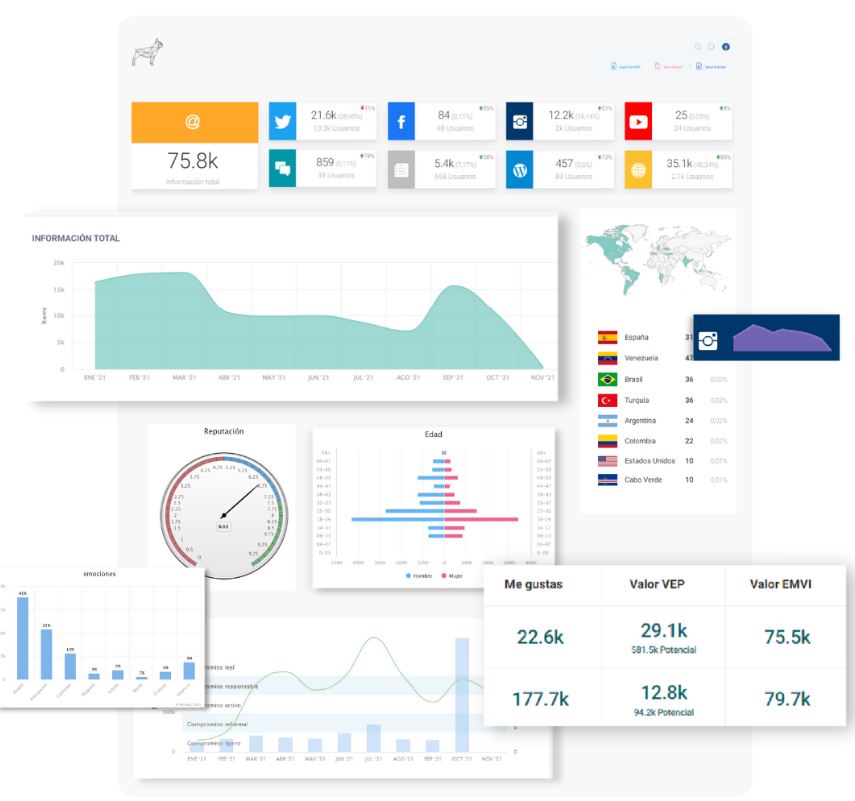
Specifically, the platform highlights common complaints within any given industry through sentiment analysis. This provides opportunities for competing brands to identify pain points and intervene. Atribus is capable of automatically classifying mentions into complaints versus inquiries, too.
9. Zoho Social
If you’re using Zoho as a CRM, the platform’s complimentary social media monitoring features are incredibly useful.
Beyond the standard monitoring features we’ve talked about, the platform lets you build a custom listening dashboard. From hashtags to specific platforms or media outlets, this gives you a comprehensive understanding of your PR and social presence at a glance.

10. Awario
Awario’s monitoring features are also similar to many of the platforms mentioned above.
That said, Awario Leads is a noteworthy addition to the platform’s regular monitoring and listening capabilities.
In short, Awario can identify specific instances of people asking for recommendations for a particular industry. This again shows how monitoring is an active process that can help you win more business.

11. Cyfe
Cyfe is an analytics platform that lets you create custom dashboards to monitor key social media metrics from one centralized location.
Track followers, engagement, reach, top posts and more on Facebook, X (Twitter), Instagram, YouTube and LinkedIn. Cyfe is particularly helpful for observing trends and patterns across your social media KPIs over time.
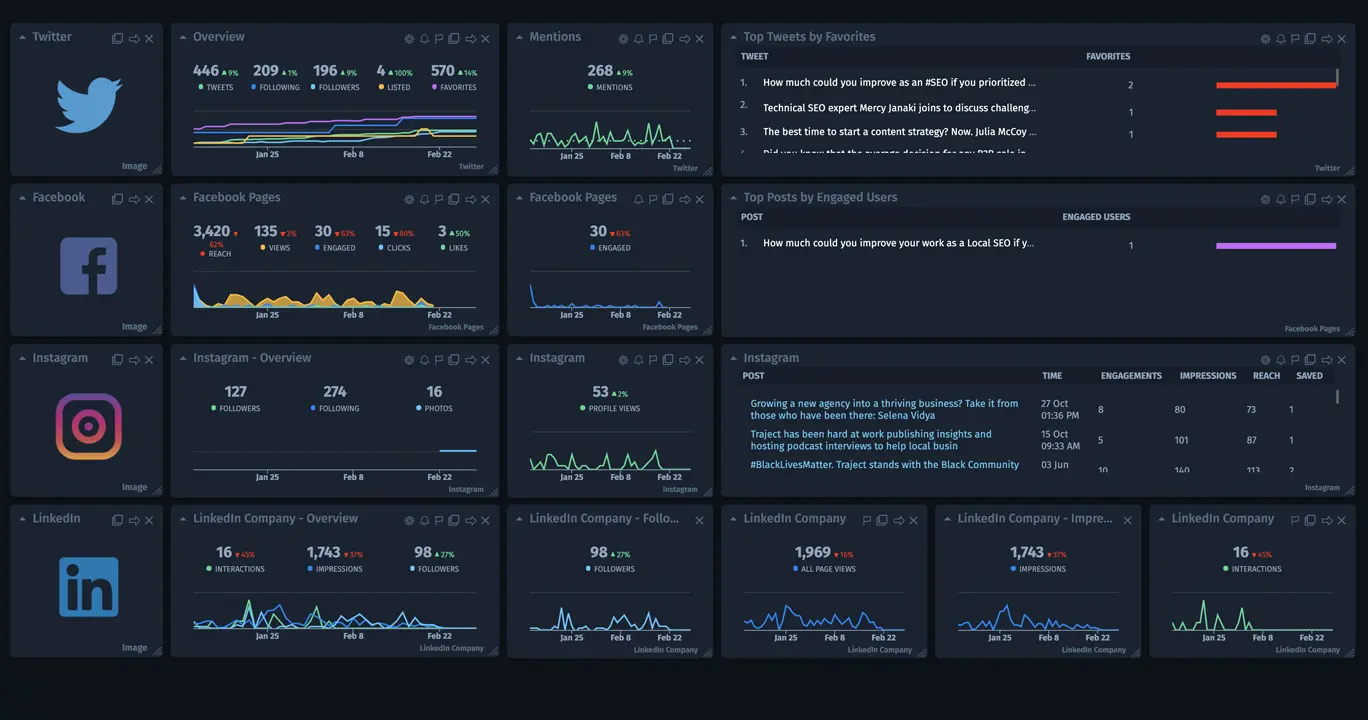
Using Cyfe’s dashboard also makes reporting a breeze. You can easily present all your social media metrics to team members, clients or managers.
Plus, most metrics are presented in the form of data visualizations like colorful charts. This helps you make sense of the data and understand the overall performance of your brand.
12. Sendible
Sendible is a powerful social media management tool that lets users track analytics, generate reports, and design, schedule and publish content across multiple social media networks without leaving the platform.
You can keep tabs on brand mentions and industry keywords, and even respond to comments on multiple platforms from within Sendible.
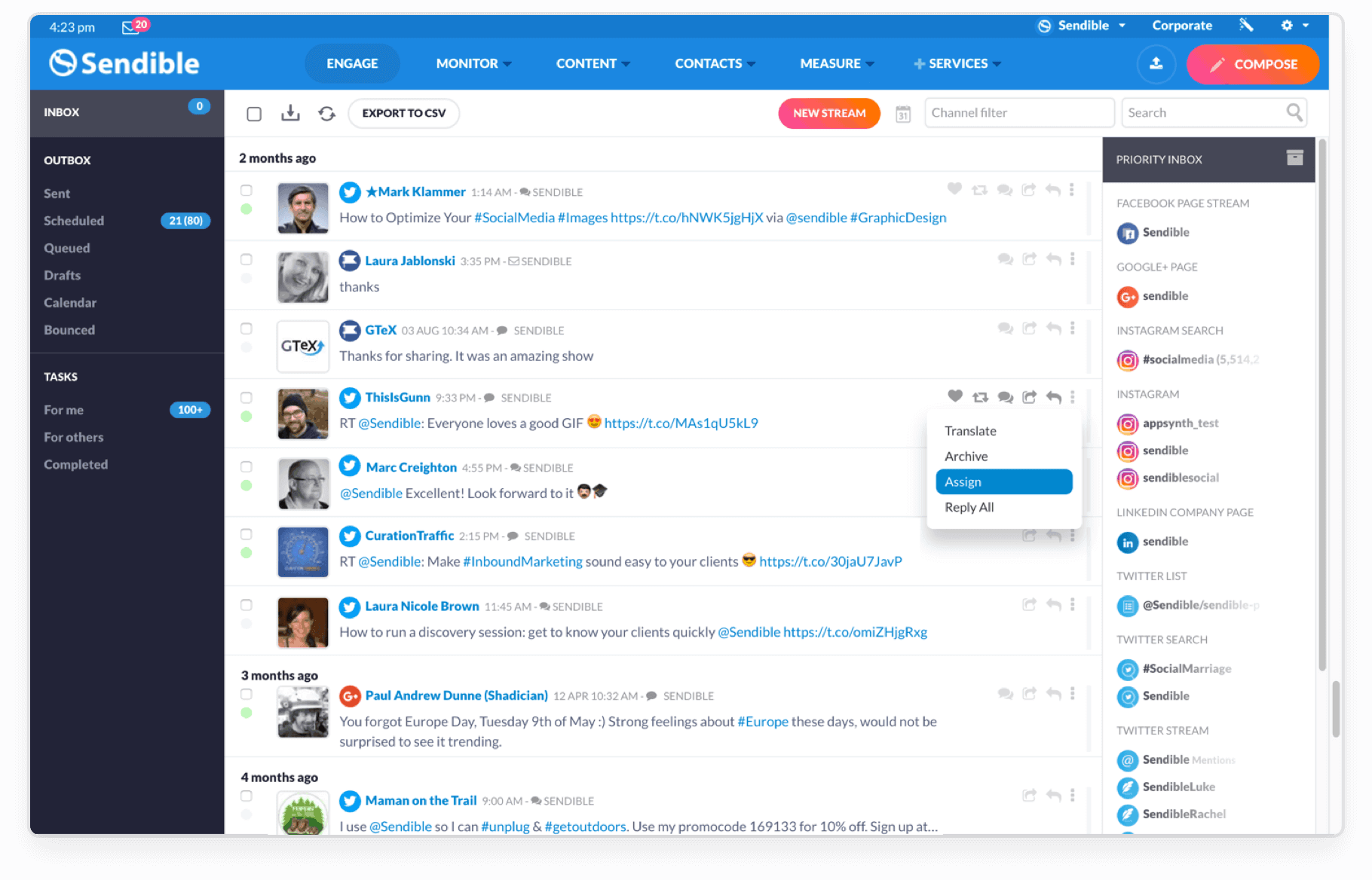
The tool is built with agencies in mind, so if you’re monitoring the social presence of multiple client accounts, you can create a separate dashboard for each one. They also offer white-label solutions for those looking for customized software aligned with their brand.
13. Brandwatch
Brandwatch is a social media analytics platform known for its advanced social monitoring capabilities, including sentiment analysis and trend tracking.
The tool integrates with all popular apps and networks, and can gather data from millions of sources. It can also perform deep, granular analyses of social conversations and create custom dashboards to help you measure performance.
You can also use Brandwatch’s AI smart alerts to take swift action in response to unusual trends, such as spikes or drops in brand mentions.
14. Meltwater
Meltwater provides a holistic approach to brand monitoring—it combines social media, news and blog tracking. In fact, it even uses AI to find brand mentions in podcasts.
The platform lets you search for unlimited keywords and queries, dig into industry trends, scour historical analytics and even generate reports to uncover the meaning behind all that data. You can also leverage sentiment analysis to understand how customers feel about your brand.
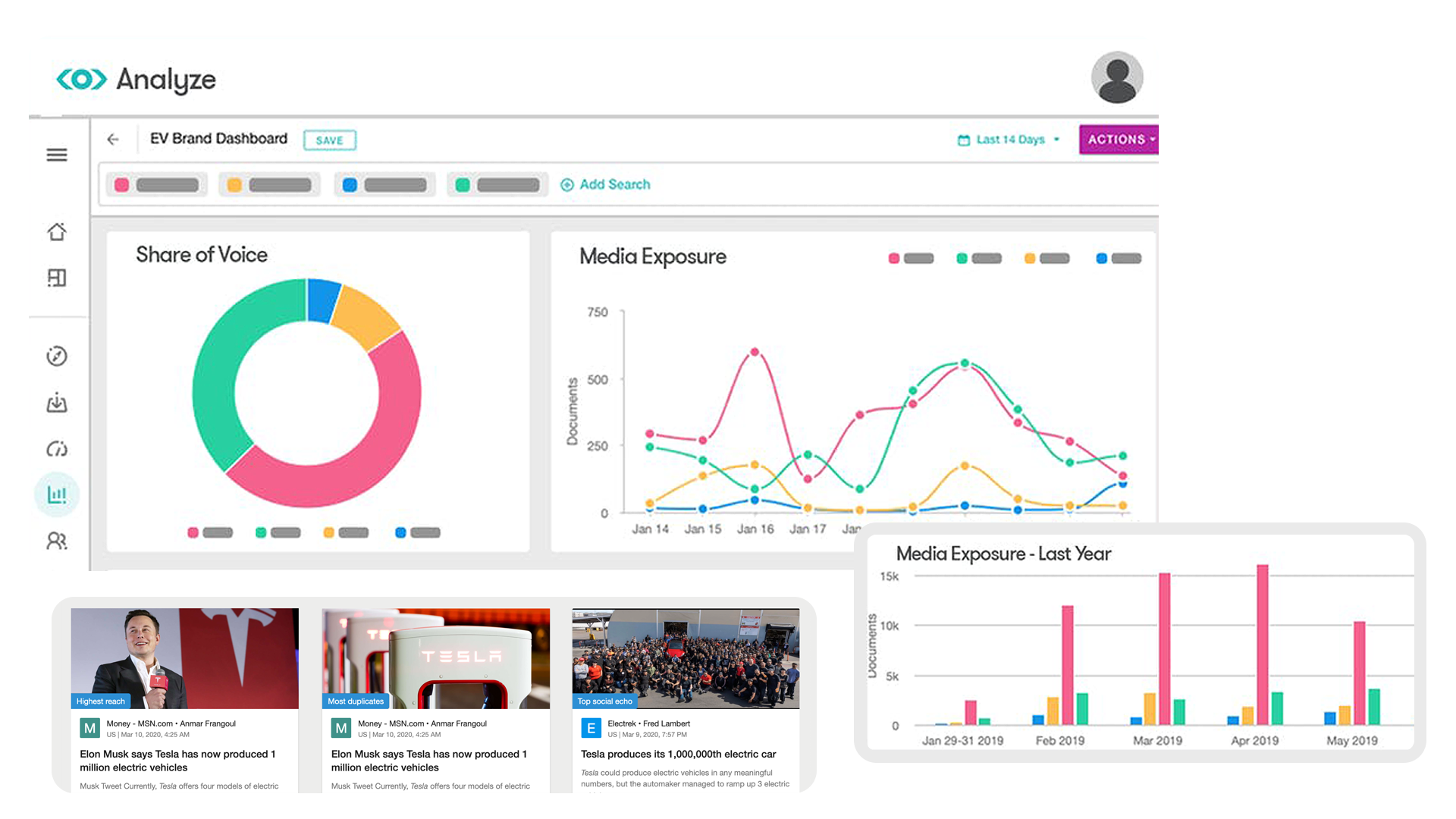
Another cool feature Meltwater offers is visual analytics searching to analyze image/video content shared on platforms like Reddit, blogs, forums and news sites.
15. YouScan
YouScan specializes in visual content analysis—it uses AI to scan social media for images and videos that include brand mentions, logos and relevant scenes. This lets you uncover brand-related content that might be missed by traditional text-only social monitoring tools.

The platform also analyzes sentiment in visual content and puts it into context to help brands better understand how they’re perceived on social media. It’s a valuable tool for brands focused on visual branding and those interested in tapping into user-generated content.
4 tips for social media monitoring
Tracking metrics and mentions on social will only get you so far. The tools above offer plenty of other powerful features to help position your brand for success.
Follow the tips below to make the most of your social media monitoring efforts:
1. Monitor relevant keywords for your brand
Instead of just tracking brand mentions, keep tabs on specific keywords related to your brand and industry. This could include product names, features, popular hashtags, common industry phrases and even competitor names.
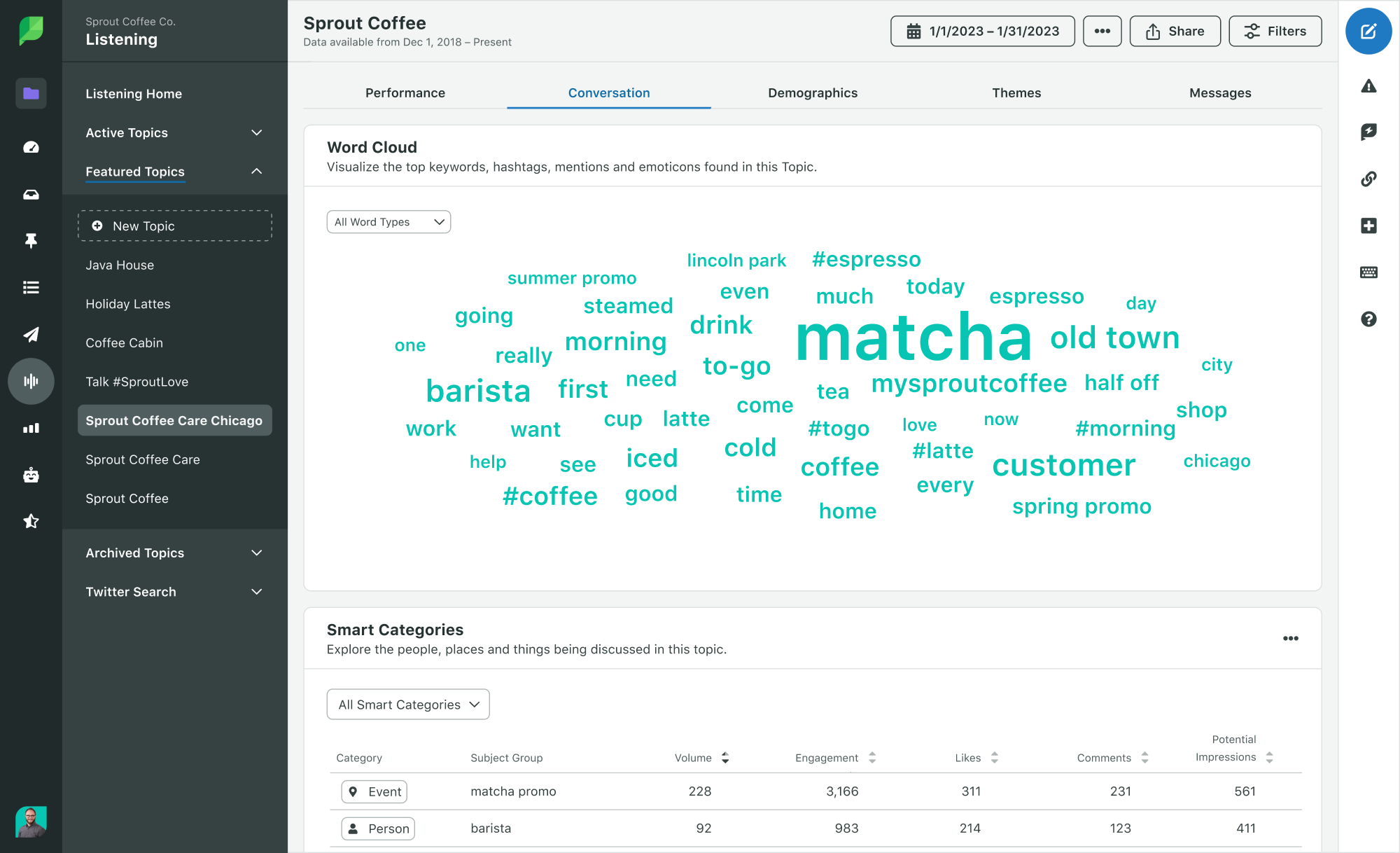
For example, a fitness app might monitor keywords like “workout”, “fitness tips” or “healthy living.” This could help them identify trends in the fitness sphere, such as a rising interest in at-home workouts. They could use that info to create more relevant content and features.
2. Monitor across different channels
Your audience is spread across various social media platforms, like Facebook, Instagram, X, LinkedIn, Reddit and others. And every channel has its unique dynamics.
You need to monitor your online reputation, customer sentiment and key metrics on every platform your audience is active on to create targeted strategies for each one.
For example, you might find engagement is low on Instagram but great on LinkedIn. Digging deeper might reveal you’re just posting at the wrong time on Instagram.
Luckily, most social media monitoring tools let you track insights across multiple channels from one dashboard. Sprout Social, for example, lets you create consolidated reports and get a birds-eye view of your overall social media performance.

3. Monitor customer sentiment
Understanding how people feel about your brand is just as important as knowing what they’re saying. Sentiment analysis involves studying the tone and emotions behind all the comments, reviews and mentions—so you know exactly what customers are thinking.
Customer sentiment can be positive, negative or neutral. Some tools like Sprout Social give you a sentiment score to help you quantify that metric. Use it to adjust your strategy to improve customer satisfaction and overall perception of your brand.

4. Monitor your competitors
Don’t just monitor your own brand. Use these tools to keep an eye on your competitors and their strategies. What kind of content are they posting? Is their brand getting more mentions than yours? What’s the customer sentiment like?
Sprout gives you visual reports to help you monitor your competition and benchmark performance across various channels:
Tracking your competitors’ campaigns, publishing behavior, engagement rates, interactions, response timings and other strategies helps you learn from them, anticipate their moves and capitalize on any gaps in their strategy.
Competitive analysis also helps you differentiate yourself from the crowd. What unique value do you bring to the table? Is there anything that your product offers that theirs is missing? Focus your energy on highlighting those areas in your promotions and campaigns.
Use social media monitoring to build better campaigns
Stepping up your social monitoring should be a top priority regardless of your industry.
The closer you track what people are saying about your brand, the better you can serve your target audience.
Likewise, you can form more meaningful relationships with your followers and customers. That’s because you’re already clued into their wants, needs and pain points.
Doing so means having the right social media monitoring tools at your fingertips. Try a tool like Sprout Social to align your publishing and customer service strategy with your monitoring insights in one place.
The post 15 social media monitoring tools you need in 2024 appeared first on Sprout Social.
from Sprout Social https://ift.tt/8DCR3Js
via IFTTT



























